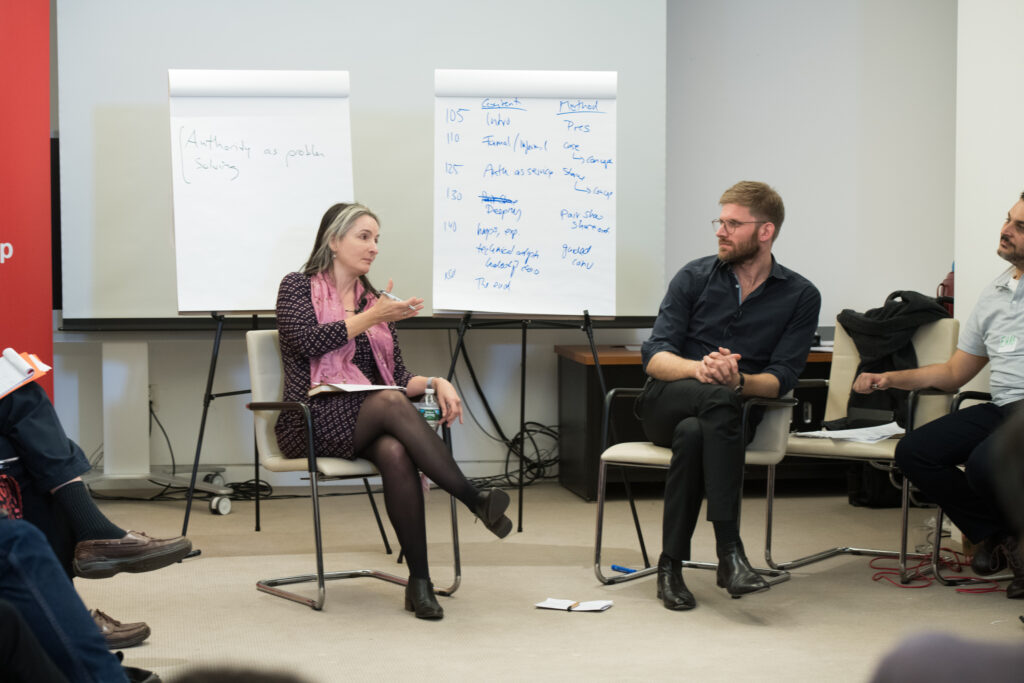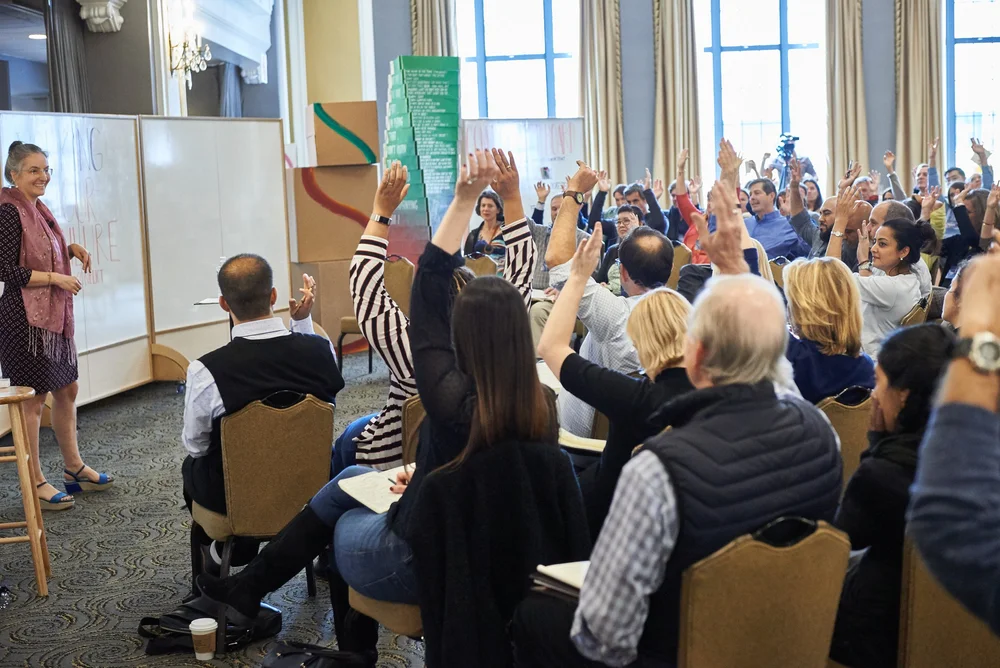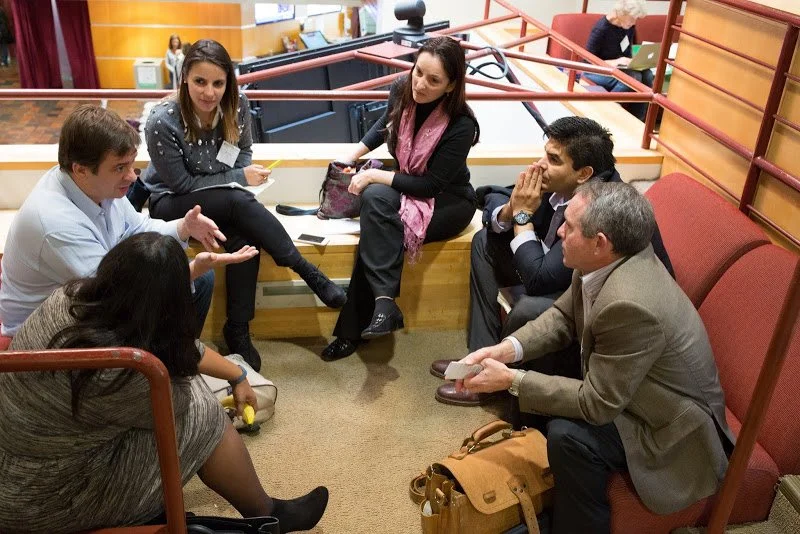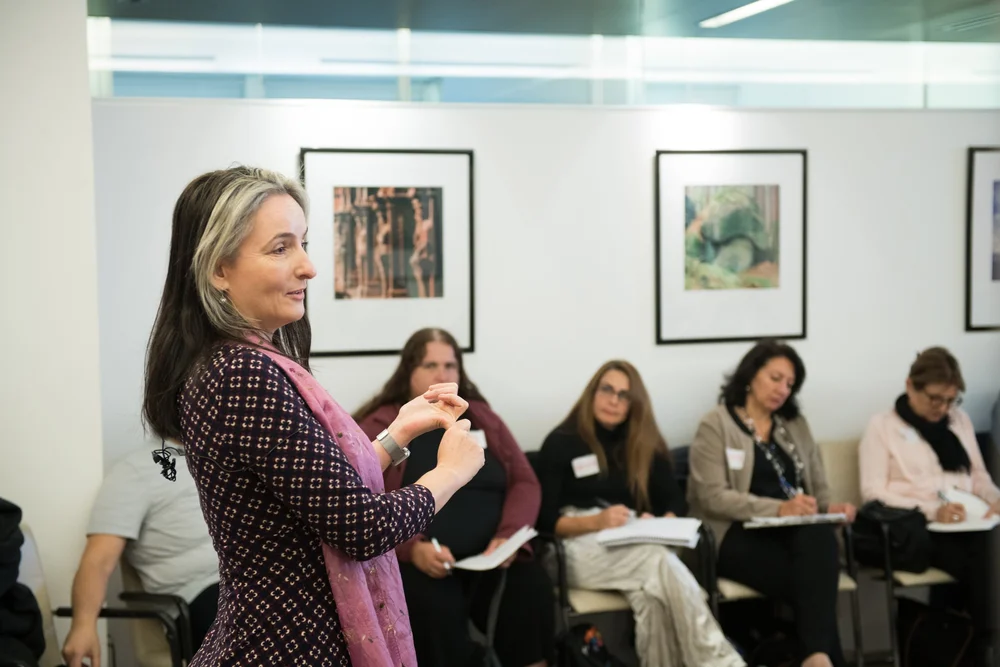What Is Executive Coaching?
Executive coaching has become a catch-all term — often used to describe everything from performance feedback sessions to deep personal transformation work. At its best, 1:1 executive coaching offers focused, confidential space to help a leader reflect, shift behavior, and grow. It can be powerful. And it can be deeply needed.
But it’s not always enough.
Executive coaching services are usually structured around an individual leader — their goals, their development, their behaviors. It’s reflective. Often personal. Sometimes corrective. The coach creates space for honest conversation, for working through challenges that might not be easy to name elsewhere. In many cases, coaching is valuable precisely because it’s private.
Still, that privacy can create limits.
Often, what feels like a personal leadership issue turns out to be rooted in broader dynamics — misalignment, mistrust, structural noise. And no amount of personal reflection can solve what is essentially a collective or strategic problem.
What Is Traditional Leadership Training?
Leadership training programs are everywhere. You’ve probably sat through one. You may have even offered them to your team.
They tend to be workshop-based, curriculum-driven, and time-bound. Some offer toolkits or personality assessments. Others walk leaders through communication or delegation models. Often, they’re designed to be scalable — one-size-fits-many.
There’s nothing inherently wrong with traditional leadership training. At the stronger end of the spectrum, leadership training can be thoughtful, well-designed, and tailored to a real context. It can shift how people think about leadership, surface new insights, and create shared language across a team. But insight isn’t the same as capacity — and that’s where we pick up the work.
The problem is that most real leadership moments don’t happen in training environments. They happen under pressure. In conflict. Midway through change. In the middle of a system that doesn’t want to shift.
A training might give someone a new lens. But that doesn’t mean they’ll know how to use it when it matters — especially when the environment is reactive, relationships are fragile, or leadership is under pressure. And even when a new behavior is clear, change is slow. Capacity builds over time, not in a single session. Without reinforcement, without space to practice, short trainings rarely stick — and rarely shift anything that matters.
When Coaching Is (and Isn’t) Enough
We’re sometimes asked if we offer 1:1 executive coaching — or if we have an off-the-shelf coaching package. The short answer: occasionally, and with caution.
We do coach leaders. But we’re not typical 1:1 executive coaches. We don’t offer one-size-fits-all coaching programs — and we rarely take on standalone 1:1 executive coaching engagements unless we know the context well.
There are moments when 1:1 coaching is helpful — especially when a leader needs protected space to reflect, recalibrate, or work through internal barriers. But in our experience, coaching alone is rarely enough to support the kind of change our clients are navigating.
Leadership doesn’t happen in isolation. It happens in systems — in the push and pull of teams, pressures, relationships, and constraints. Coaching that’s disconnected from that system can quickly become disoriented. At best, it spins in circles. At worst, it misses the urgency or scale of what’s really happening. Research from INSEAD supports this, showing how multi-tiered coaching approaches strengthen both leaders and their organizations.
We’ve seen this firsthand. In one engagement, we began coaching a senior leader who presented what seemed like a clear, manageable challenge. Halfway through, after hearing from colleagues and reviewing a broader 360, we realized the situation was far more strained than he understood — and far more urgent than we’d been told. The coaching we were doing wasn’t wrong. It just wasn’t close to enough.
That’s why we’re cautious. If we do offer 1:1 executive coaching, it’s usually within a larger intervention. And it always includes outside perspective — stakeholder interviews, team dynamics, or structured feedback. Without that, we’re working with too little information to be truly useful.
That said, we regularly take on executive coaching engagements in organizations where we know the context and have been part of a larger body of work. Many of our leadership development programs include a coaching component. In fact, in large-scale initiatives, we may coach 100+ leaders — either individually or in small groups — as part of a broader organizational effort.
We find that small-group case discussions are particularly effective for surfacing and working through strategy challenges, alignment issues, team tensions, and leadership dilemmas. And because those discussions happen across roles and functions, they also build a durable internal network — one that continues to support itself long after the program ends.
Where 1:1 executive coaching adds the most value is in the “managing self” dimension of leadership:
- Strengthening executive presence
- Becoming more flexible in how authority is exercised
- Identifying the ways we unintentionally get in our own way
- Working with inner critics, imposter syndrome, or perfectionism
- Rebuilding confidence in moments of leadership stretch
In other words: we believe in coaching — when it’s in service of real development, connected to real context, and held inside a system that’s ready to do something differently.
What We Do Instead: Executive Development for Complexity
We don’t offer off-the-shelf training. And we’re not typical 1:1 executive coaches.
We partner with senior leaders and leadership groups who are trying to shift something that isn’t shifting — an organization, a culture, a strategy, a system. Sometimes that work is about activating change. But just as often, it’s about facing into a moment that feels unformed, volatile, or full of possibility — a moment that can’t be solved by doing what’s been done before.

In some cases, the challenge is uncertainty.
We’re working with scientific and research leaders who are having to say to their teams: “We just don’t know what’s coming in the next six months.” Funding is delayed. Strategic direction is in flux. The external landscape keeps moving — and leaders are expected to provide clarity anyway. In these moments, leadership isn’t about having answers. It’s about offering steadiness, making meaning out loud, and helping the team stay engaged without pretending to have all the answers.
In other cases, the challenge is opportunity.
A new role, a major initiative, a strategic invitation appears — and the instinct is to scale: hire more people, bring in more funding, expand the team. That instinct is understandable. But sometimes, scaling isn’t the right move. Or it’s not enough.
What’s required is an adaptive step: a reimagining of how the work happens, how authority is shared, how strategy is framed. Scaling what worked yesterday doesn’t make the future possible. Changing how the organization operates — how it learns, responds, and decides — often does.
Our work is intended to be pragmatic, practical, and impactful. If it’s not making a difference, we recalibrate, redesign, or reconsider. That doesn’t mean transformation happens quickly. In fact, when we look for grounded change in behaviors or leadership capacity, it typically becomes visible around the 9- to 12-month mark.
Before that, we often see signs that something important has begun:
- New energy and realignment across the leadership team
- A sense of traction or movement after a period of gridlock
- Difficult conversations that were avoided finally being surfaced
- Rebuilding of trust or repair of strained relationships
- A renewed sense of focus, shared language, or forward momentum
But those early shifts are fragile.
Without continued support, they can revert. Without reinforcement, what felt like traction becomes momentary enthusiasm. That’s why we don’t treat these signals as success. We treat them as invitations: to deepen, to commit, and to build the capacity that will hold under pressure.
We design experiences that are:
- Practice-based – grounded in the real work, not abstract scenarios
- Collaborative by design – we work with teams and distributed leaders to build alignment, cohesion, and shared momentum
- Strategy-connected – woven into the decisions that shape the work, not parked in a separate track
- Framework-informed, not framework-bound – we introduce structured (and learnable) approaches to diagnosing challenges, leading change, fostering innovation, and navigating uncertainty — always in service of building real capacity
- Intervention-ready – beyond the immersive learning experiences we design — including deep-dive offsites, regular virtual or in-person debriefs, skills-based sessions, and small group or individual coaching — we also step in with targeted interventions when the moment calls for it: leadership dialogues, system-wide 360s, adaptive value chain mapping, team reconnection retreats, cross-functional leadership forums, or facilitated difficult conversations to help groups move forward
How Long Does Leadership Development Take?
It depends.
Some teams bring us in for a single catalytic moment — a 1.5-day offsite to reset strategy or a half-day intervention to interrupt an unhealthy dynamic. But more often, the work continues from there. As we get to know the organization — and they get to know us — we’re invited back into future moments of challenge, transition, or opportunity.
In fact, over 90% of our clients continue working with us across multiple projects and engagements — in some cases for close to a decade. We build long-term relationships not because the work is indefinite, but because the complexity is ongoing — and so is our commitment. We stay close to the system and remain ready to support, whether that means designing a new leadership development strategy or stepping in quickly when something breaks open.
We don’t believe leadership development is a one-and-done event. And we don’t push long, rigid programs for the sake of structure. We partner with our clients — helping shape long-term leadership development strategy when it’s needed, and stepping in to support when something unexpected arises. Sometimes we’re the architects. Sometimes we’re the pinch hitters. Often we’re both.
The key is matching the depth of the work to the scale of the challenge — and building real capacity, not dependency.
What’s the ROI of This Kind of Work?
This is a question we consider crucial — and one we approach with both honesty and discipline.
Leadership development is notoriously hard to measure. Its impact is often easy to feel and see — and much harder to quantify. But we believe evaluation matters, and we work closely with our clients to define what meaningful impact looks like.
We hear stories all the time — not just from participants, but from those around them.
When programs are delivered over time, in rolling cohorts, we often hear something like:
So-and-so went through the program, didn’t they? It was night and day. The way they led our team completely turned around — for the better.
Or we’ll hear directly from a participant:
I’d been stuck — circling the same team dynamic for a year, losing sleep over it — and the small group coaching just unraveled it. I had the difficult conversations, reset the tone, and we’re in a totally different place now. I honestly thought I wasn’t cut out to lead. That changed everything.
In some cases, we’ve seen whole organizations shift — from near-mutiny among senior leaders resisting a new strategy, to a re-engaged team ready to lead through the hard parts of change. Even when the work is still tough, the energy is no longer stuck.
Our pre- and post-program feedback consistently reflects movement:
“Something landed.”
“We’re using this.”
“It changed how I show up.”
But for us, the deeper and more lasting ROI is cultural.
We hear that cohort members continue meeting in peer coaching groups long after the program ends. That new collaborations form across departments. Or simply that they trust other cohort members have good intentions — which is magic for building resilient and innovative organizations.
When possible, we encourage longitudinal evaluation. One example: a recent study of our Manager to Leader program — designed for early and mid-career managers and delivered to its tenth cohort — showed a statistically significant impact. Compared to other internal programs, participants in our cohort were over three times more likely to be retained and promoted. It was one of the rare opportunities where we had the scale and support to gather meaningful, comparative data — and the results were compelling.
To support our impact evaluation work, we have an experienced people analytics adviser on our team who helps us design strong surveys and collaborates with our clients to define meaningful metrics — both qualitative and quantitative — wherever possible.
ROI, for us, isn’t about attribution. It’s about traction — and whether the work holds up when it’s tested.
When to Choose Coaching — and When You Need Something More
If you’re looking for personal reflection, targeted behavior change, or a private sounding board, 1:1 executive coaching may be exactly what you need.
But if what you’re facing is bigger than one person — a broken team, a complex decision, a pattern that keeps repeating — then you probably need something more.
That’s what we do.






